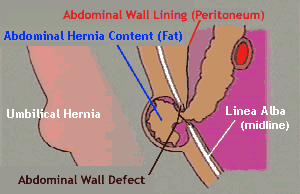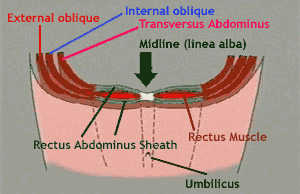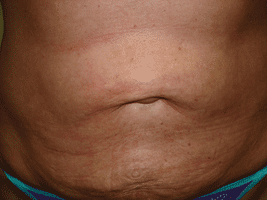Epigastric, Para-Umbilical – Umbilical and Incisional Hernia
The mechanism and development of Epigastric, Para-Umbilical, Umbilical and Incisional Hernia and the defects through which they protrude are demonstrated. An approach to management of each type is presented.
These diagrams show the general structure of the abdominal wall. It shows the 3 main muscles in brown. These muscles fuse and form a large aponeurotic tendon sheet (termed the rectus sheath) and this encloses a single strap-like muscle – the rectus abdominis muscle – the rectus sheath fuses in the mid-line to form the linea alba (white). Because this is a single layer here this is a potential weakness and thus a common site where hernias develop – termed ‘epigastric’ hernias.
Clinical Images
Epigastric, Para-Umbilical, Umbilical and Incisional Hernia Clinical Images




